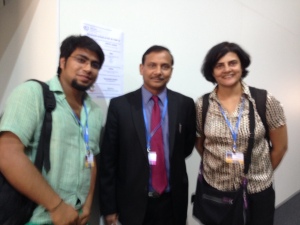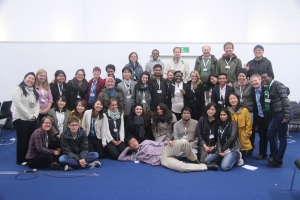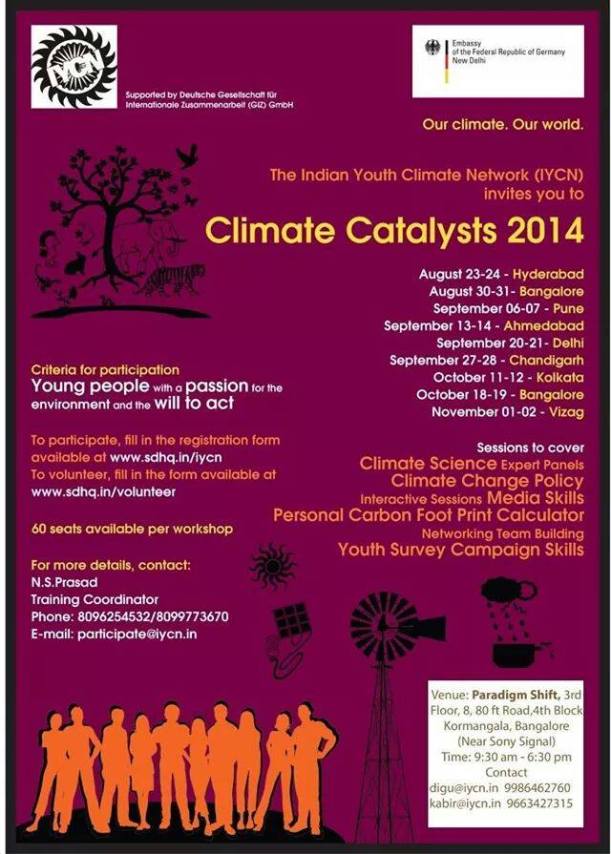Indian Youth Climate Network Policy Brief on Technology Transfer under UNFCCC
Background & Current Status:The world economy at large is still dependent on carbon intensive sources of energy. There are significant steps undertaken by many developed countries to move from carbon intensive sources to renewable sources. But there is lot left to do. The development trajectory followed the west after the industrial revolution can no longer be a safe pathway for developing countries to move on. Poverty, low access to financial services and political instability have kept many developing countries in the fossil fuel based carbon trap. Thisformed the backdrop for the adoption of Article 4.5 in the UN Framework Convention on Climate Change (UNFCCC) that refers to commitment on the issue of transfer technology to help poor countries leapfrog to a less carbon intensive future. The article states
“The developed country Parties and other developed Parties included in Annex II shall take all practicable steps to promote, facilitate and finance, as appropriate, the transfer of, or access to, environmentally sound technologies and knowhow to other Parties, particularly developing country Parties, to enable them to implement the provisions of the Convention. In this process, the developed country Parties shall support the development and enhancement of endogenous capacities and technologies of developing country Parties. Other Parties and organizations in a position to do so may also assist in facilitating the transfer of such technologies.”
Technology Transfer in UNFCCC has been one of the most contested issues as it involves added financial costs for developed countries to help developing countries leapfrog. There are additional concerns over “Intellectual Property Rights” that are currently under the rubric of “World Trade Organization” and not the UNFCCC that impede work under article 4.5. Some of these obstacles were addressed in COP 7 in Marrakesh, resulting in an accord, which had Technology needs assessment, technology information, enabling environments and capacity building as its four pillars. These are described below –
Technology needs assessment: “Technology Needs Assessments (TNAs) are a set of country-driven activities that identify and determine the mitigation and adaptation technology priorities of Parties other than developed country Parties, and other developed Parties not included in Annex II, particularly developing country Parties.”
Technology information: “The technology information component of the framework defines the means, including hardware, software and networking, to facilitate the flow of information between the different stakeholders to enhance the development and transfer of environmentally sound technologies.”
Enabling environments: “This component of the framework focuses on government actions, such as fair trade policies, removal of technical, legal and administrative barriers to technology transfer, sound economic policy, regulatory frameworks and transparency, all of which create an environment conducive to private and public sector technology transfer.”
Capacity Building: “The capacity building component is a process which seeks to build, develop, strengthen, enhance and improve existing scientific and technical skills, capabilities and institutions in Parties other than developed country Parties, and other developed Parties not included in Annex II, particularly developing country Parties, to enable them to assess, adapt, manage and develop environmentally sound technologies.”
These components were expanded in the Cancun Agreement in COP 16 and termed Technology Mechanism, “fostering public-private partnerships; promoting innovation; catalyzing the use of technology road maps or action plans; responding to developing country party requests on matters related to technology transfer; and facilitating joint R&D activities.”
The Technology mechanism consists of Technology Executive Committee (TEC) and Climate Technology Center and Network (CTCN). The Technology executive committee that worked on the technology mechanism, formulated a report based on the needs of 31 parties who submitted their application including Bangladesh, Sri Lanka and Bhutan from South Asia. In order to compile the report, the existing frameworks of the parties were studied, sectors were prioritized for adaptation and mitigation and barriers were identified. Following this recommendations for technology action plans were prepared and submitted for consideration to the Subsidiary Body for Scientific and Technological Advice in 2013. This has been a good starting point with more parties sending their requests to become the beneficiaries of the technology mechanism in subsequent months.
Last year in Warsaw, COP 19, parties finalized the modalities of Climate Technology Center & Network and its advisory board resulting in streamlining of submissions from National Designated Entities on the issue.
The Road Ahead
Mandate to TEC to provide guidance on CTCN priorities: The work of CTCN is seen as a developing country driven process, but fact remains that there is no adequate mechanism by which developing countries can voice their collective requests. The TM needs to adopt and request prioritization procedures that are based on the ADP’s understanding of equity, and how it is measured, to create an “equitable distribution” of the resources of the CTCN.
Long term funding for TEC and CTCN: Long term financing of technologies is must for making Technology Mechanism work. There have been contributions from Indonesia, Netherlands, United States and others under Global Climate Finance that are most welcome. However,developed countries need to mobilize more resources to reach the specified targets. Voluntary commitments from developing countries for climate financing should be encouraged. Private funding can and should be mobilized as private enterprises have a large role to play in the TM. However, there is a note of caution with private funding. It will come with its own set of strings which may hamper the agenda of TEC & CTCN orienting it towards certain interests.Therefore, the core funding for the decision making part of the TM, the TEC and the Climate Technology Centre and its Advisory Board should be supported in the long term through public funding.
The framework of CTCN is sound but there has to be enhanced emphasis on including transfer of knowledge, technology and skills for energy efficiency and renewable energy. This will help developing countries to diversify their energy portfolio, thereby reducing their dependence on coal. Many countries like India & China are already moving in that direction. Setting up CTCN at regional levels could then be the next step.
Application of Precautionary Principle: CTCN should also have a mandate to ensure that the socio-environment impact of all environmentally sound technologies is studied thoroughly. There are many technologies that may seem less carbon intensive but can have high ecological, economic and health costs. Funding to such technologies should be refrained.
Stakeholder identification and community participation in decision making on technology assessment and action plan should be made compulsory. The methodology for stakeholder identification and participants should be evolved and adapted to varying local conditions of countries. It is important to ensure the participation of youth, women, indigenous peoples and local communities and other marginalized groups as stakeholders in the process. Inputs collected should be presented by the national designated entities while filing the request. Any opposition from the communities should also be recorded for consideration. Technology Transfer should be done in an inclusive way and the goals of poverty alleviation intertwined with it. More Green jobs for youth, skill building of the poor and marginalized groups on priority basis should be encouraged.
Clean Development Mechanism (CDM) norms should be revisited for ensuring that past mistakes of funding “efficient but still carbon intensive technologies” are not repeated. For technology transfer non-market based approaches should also be identified, which currently is considered as anti-thesis of innovation in technology.
Stronger engagement with other conventions and agreements: International and other national Patent Rights norms of developed countries can be a hurdle and obstacle in technology transfer. Parties should be encouraged to remove those barriers for accessing the resources. If possible, creating a common pool of technologies and best practices should be evolved for the benefit of the commons.
Youth has an important role to play. With their energies and risk taking abilities they can take charge of innovating and adapting shared technologies, marketing them at affordable prices thereby creating more green jobs and better growth model.
Prepared by Kabir Arora after consultation with Indian Youth Climate Network members.





